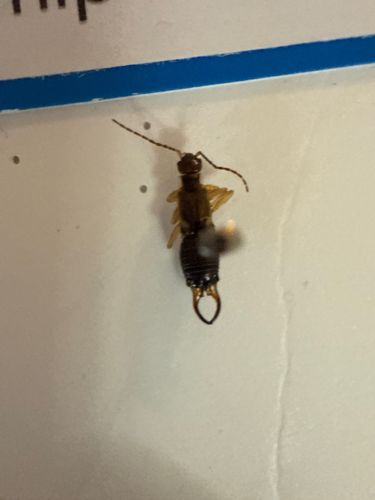Earwig
Scientific Name: Forficula auricularia (Common Earwig) or other Dermaptera species
Order & Family: Order: Dermaptera, Family: Forficulidae (for common earwig)
Size: Typically 5-25 mm (0.2-1 inch) in length, varying by species.

Natural Habitat
Damp, dark, and cool places, such as under rocks, logs, leaf litter, mulch, or in cracks and crevices around foundations, basements, and bathrooms. They are often found in gardens.
Diet & Feeding
Opportunistic omnivores. They feed on decaying organic matter, soft-bodied insects (aphids, slugs, insect larvae), plants (leaves, flowers, fruits), and algae.
Behavior Patterns
Nocturnal, hiding during the day. They are known for their prominent pincer-like cerci at the end of their abdomen. Females exhibit maternal care, guarding their eggs and nymphs. They are not aggressive towards humans but can pinch if handled.
Risks & Benefits
Risks: Can be a nuisance pest indoors, and may chew on garden plants, fruits, and vegetables, causing cosmetic damage. Benefits: Can be beneficial in gardens by preying on other pest insects like aphids and mites. They are not poisonous and do not spread diseases to humans.
Identified on: 10/18/2025